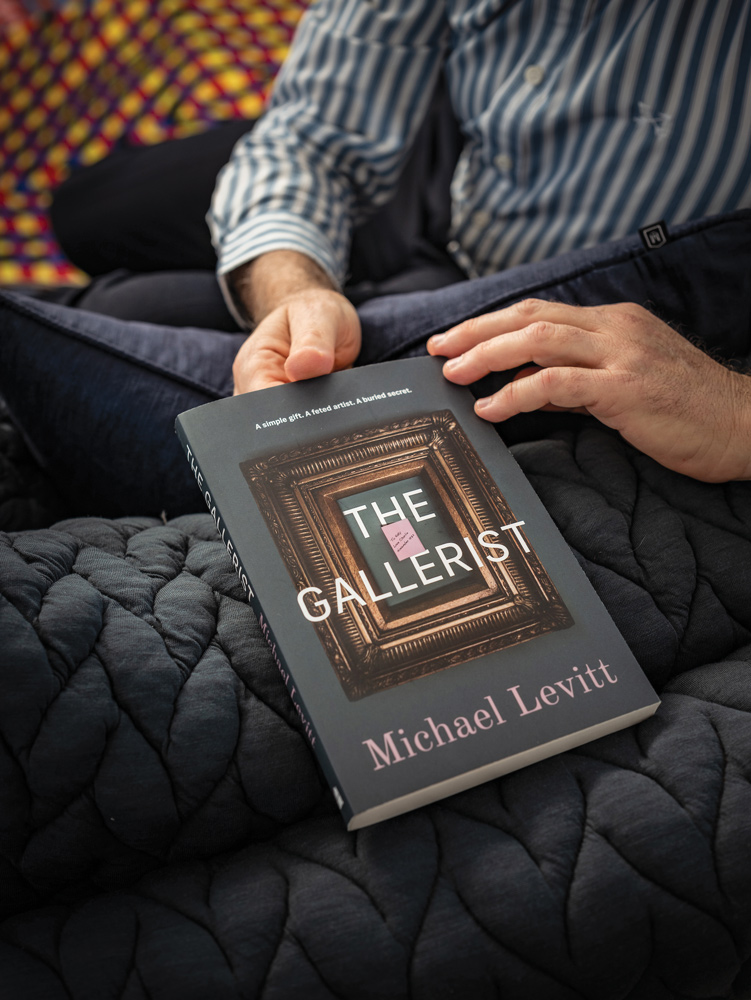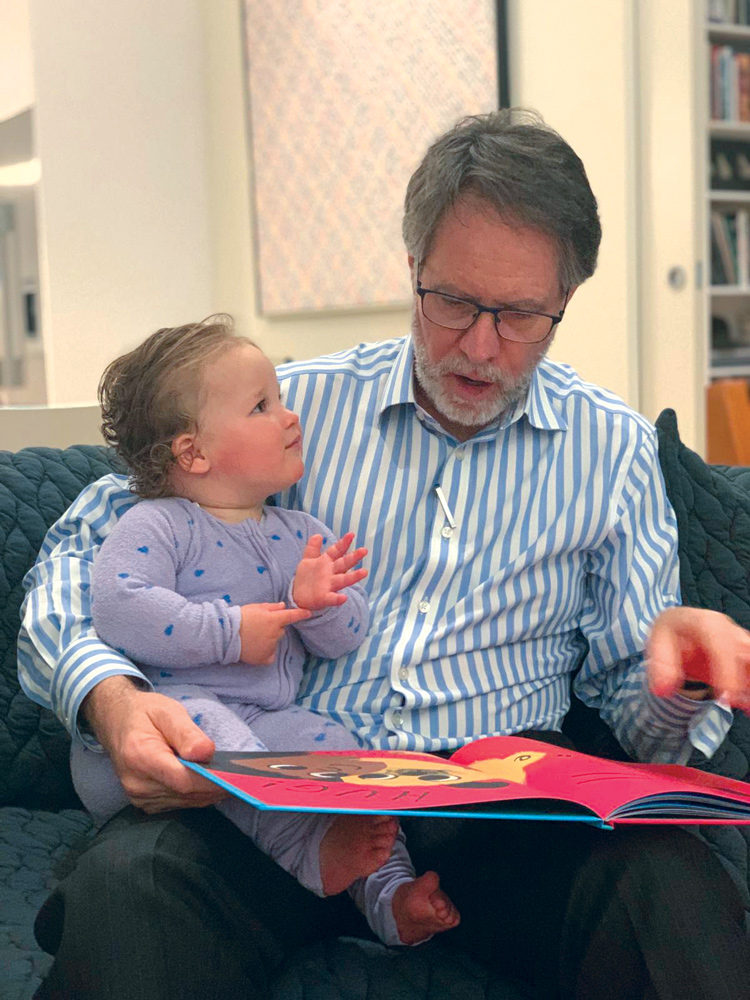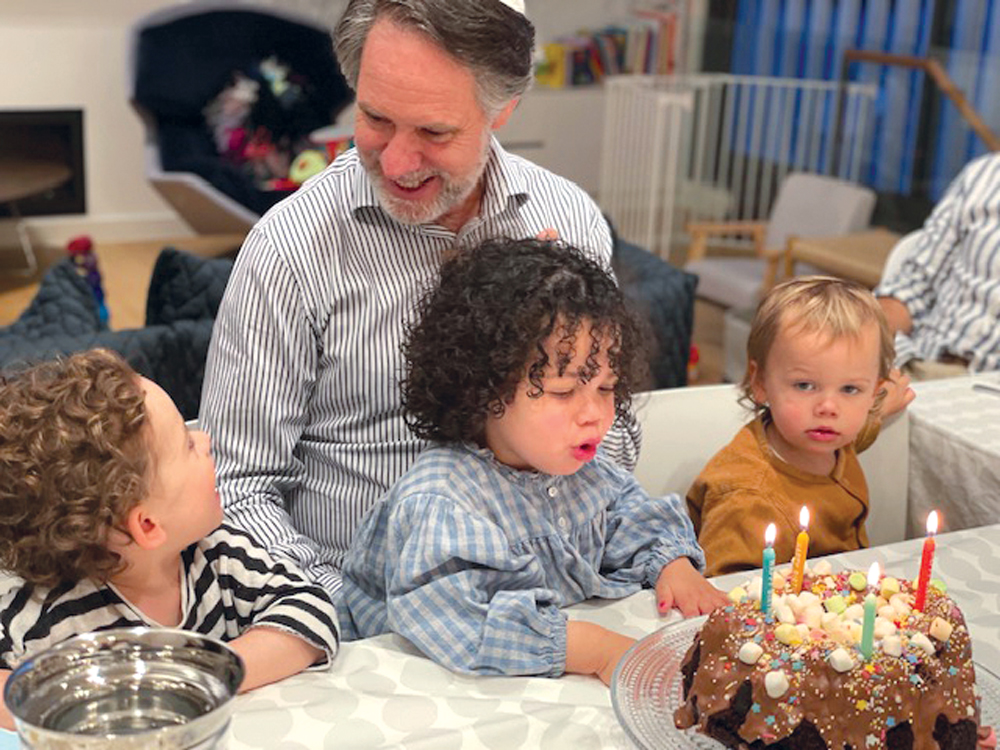 First-time novelist Dr Michael Levitt is passionate about two things – art and helping people with itchy bottoms. He explains why to Ara Jansen.
First-time novelist Dr Michael Levitt is passionate about two things – art and helping people with itchy bottoms. He explains why to Ara Jansen.
If you ask Dr Michael Levitt why he became a colorectal surgeon he laughingly suggests it would take years of therapy to get to the bottom of that question.
 The simplest answer might well be that his late father was a general and colorectal surgeon and both his brothers are doctors.
The simplest answer might well be that his late father was a general and colorectal surgeon and both his brothers are doctors.
When Michael specialised in general surgery, it was expected that you would follow that training with some sort of sub-specialty training. That usually included a stint overseas, most often in England, which is what he did.
The Colchester hospital, where he landed, was a haunt for Australian surgeons and he followed that year in East Anglia with another 18 months in London. There he worked with surgeons who specialised in colorectal surgery and did some research, giving him further exposure to the specialty and cementing his future focus.
After he returned to Perth, he spent 15 years as a general and colorectal surgeon at Sir Charles Gairdner Hospital and St John of God Subiaco before leaving SCGH and accepting an offer to work, part-time, as director of medical services at Subiaco.
Almost a decade later, he resumed full-time clinical practice until he was asked to help out as head of surgical services at Osborne Park Hospital. Within 12 months, he found himself in the position of medical co-director at OPH while continuing his surgical practice there and privately.
In 2018, Michael was appointed Chief Medical Officer with the WA Department of Health, a position many people assumed would have been in the thick of the State’s pandemic response.
“Luckily, that was the province of the chief health officer, Dr Andy Robertson, and I was grateful that he was the person in the firing line and not me,” says Michael. “But I told Andy that, if COVID-19 went on to cause an epidemic of haemorrhoids, I’d definitely be his man.”

 Michael has recently left the CMO role and has started working with the WA Country Health Service in a position which will involve administration and advocacy. When he took up the position as CMO, Michael chose to downsize his surgical practice and give up major abdominal surgery.
Michael has recently left the CMO role and has started working with the WA Country Health Service in a position which will involve administration and advocacy. When he took up the position as CMO, Michael chose to downsize his surgical practice and give up major abdominal surgery.
“I basically downsized to bottoms, hernias and functional bowel disease, which are my main interests. I might downsize a little more now, probably just looking after people whose bowels and bottoms everyone else has given up on.
“I still like my clinical work. In the health department, I was such a long way away from patient contact. Even seeing some old bloke in my rooms with an itchy bottom, being able to tell someone I might be able to help them, that’s still special.”
In 2003, Michael was awarded the Centenary Medal for services to public education about colorectal cancer and has also published three books on bowel health, the most popular, being 2018’s The Happy Bowel, a user-friendly guide for the whole family.
The 64-year-old has now published his next book, but this time it’s about his other passion – art. The Gallerist is a fictional mystery about a painting which falls into the hands of Perth gallery owner Mark Lewis, taking the reader behind the scenes of the local art world.
Michael admits The Gallerist might well have been him in an alternative life if he’d decided not to be doctor. He insists it’s not a regret, but he very much enjoyed imagining what might have been.
The book is set in Perth and Lewis’s gallery is in Mt Lawley. His sympathetic drawing of the suburb and its surrounds reveals an author who not only shows the spirit of his town but his love for it, picking out spots and conversation points which will resonate with anyone who has lived here.
“I wrote about places I like and find beautiful, like the South Perth foreshore and Hyde Park, plus we’ve been eating at Kailis’s since we were kids.”
The book also features the Sir David Brand Centre in Coolbinia, which Michael was aware of but needed to do more research to feature in the book as the place where one of the lead characters works. He admits in creating many of the characters and situations, he drew from elements of his own life, his love and knowledge of art and the people he knows.
In order to really feel like he knew the art works he was writing about in the book, including the story’s central and mysterious painting, Michael commissioned Perth artist Teelah George to paint him a series of works on board which he could reflect upon while writing.
Last year, Michael and his wife Carolyn exhibited part of their personal art collection at Ellenbrook Gallery. Their collection focuses primarily on Australian abstraction from the 1950s, ’60s and ’70s.
A sought-after public speaker as a doctor, he’s also spoken at the launch of art exhibitions and a book about Ernest Philpot as well as writing on art for various media and catalogues.
Michael has been collecting art almost all his life, starting with the money he saved up to buy his first piece when he was 13. It was a limited edition print by the late Australian abstractionist Sydney Ball from his Persian series. He paid $70 in 1970.
“In retrospect, my decision to buy it was distinctly odd. My parents must have thought it was odd and probably wondered what was happening to me.
“Later I sold that piece to my dad because I needed money when I moved out of home. He chalked it up to a business expense and hung the piece in the stairwell of the office block he had built in West Perth.
“For a long time, I used to be able to see it in the building. The building was sold in the 1980s, the print went with it and I always wondered what had happened to it.”
In a strange twist, but one so very Perth, that piece is now part of the Kerry Stokes Collection and while not hung in the stairwell, still resides in the same building.
The question of how art moves between owners and the ways in which art – through its provenance and ability to move the human spirit – engages and inspires the viewer, are the central themes explored in The Gallerist.
“Writing is an undeniably selfish undertaking. You have to be able to set aside hours at a time to get into it. Over the few years it took to complete The Gallerist, there were months at a time when I made no contribution to it at all.”
Michael hopes his latest work schedule will allow him the time to work on his next story. That is somewhere in between the work he does in the local Jewish community, being a husband, dad and granddad, collecting art and, of course, soothing those itchy bottoms.
The Gallerist is published by Fremantle Press and available from February 2.

